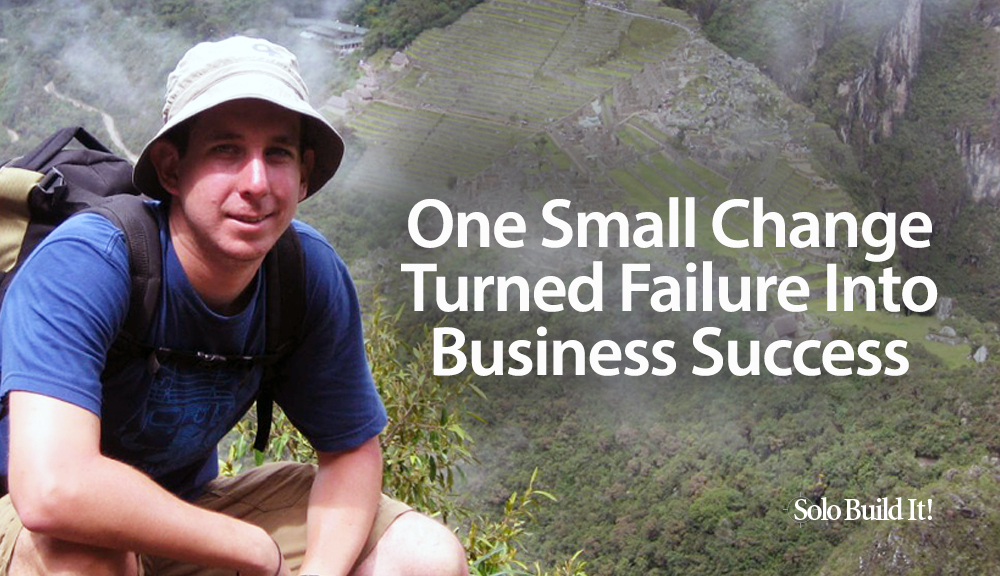
I can work anytime, from anywhere in the world. After starting to earn a full-time income and saving some money, I was able to fulfill my dream of traveling abroad. I put all my belongings in storage and traveled the world continuously for over 3 years. I visited 27 countries, learned to speak Spanish, and grew tremendously as an individual.Arthur from injuryclaimcoach.com
Arthur achieved his dream of personal and financial freedom with his SBI! online business. But success didn’t come overnight. He tried half a dozen different online business ideas and a couple of “get rich quick” scams before he found Solo Build It!.
And even then, he failed with his first attempt. His second online business with SBI!, however, is hugely successful. And, as he freely admits, there’s one main reason why he finally succeeded.
Find out what made all the difference between success and failure for Arthur.
1. With your online business, you help people with their personal injury claims and accident settlements. How did you know this was the right topic for you and had great business potential?
I went through a lot of trial and error with different online businesses before I found SBI! and the current topic of personal injury claims. Nothing I tried previously caught on. Even after discovering SBI!, I failed with my first site in the self improvement niche.
I thought I knew better than SBI!’s instruction, so I didn’t follow the Action Guide — big mistake. But I was determined to make a living online, so I kept at it. I wasn’t as interested in finding a topic I was passionate about, like SBI! recommends, since I knew I had the determination to stick with it and make the business work no matter what.
It’s now 10 years later and I’m still going strong. I’m more passionate about my business than ever. I think in some ways, passion comes with expertise. As I learned more and got better at online business, I became more and more passionate about it.

Lesson 1: Follow the SBI! Action Guide. Not for nothing is this the highest rated piece of advice from all the successful SBI! members we’ve spoken to.
Lesson 2: Being passionate about a topic is only one of several factors you will evaluate when researching your best possible niche. Granted, it’s an important one. But, if you choose well and are determined to make it work, no matter what, you can succeed with any topic, passionate or not.
So, there’s hope for those who don’t have a single biggest life passion. To paraphrase the saying… “build it, and it — the passion that is — will come.”
Once I understood SBI!’s process better, and learned how to assess a topic’s keywords and revenue potential, I settled on the personal injury niche. Advertising rates are very high, and there was a market opportunity in producing a “how to” type of site. The only competition was either very large content sites dealing with all aspects of law, or attorney sites which didn’t have much in-depth content.
It helped that my brother is a personal injury attorney, so I was able to review the topic’s potential and assess competition with him. Even though he’s not very involved in my business, he acts as a consultant and occasionally contributes some content. In return he gets free advertising.
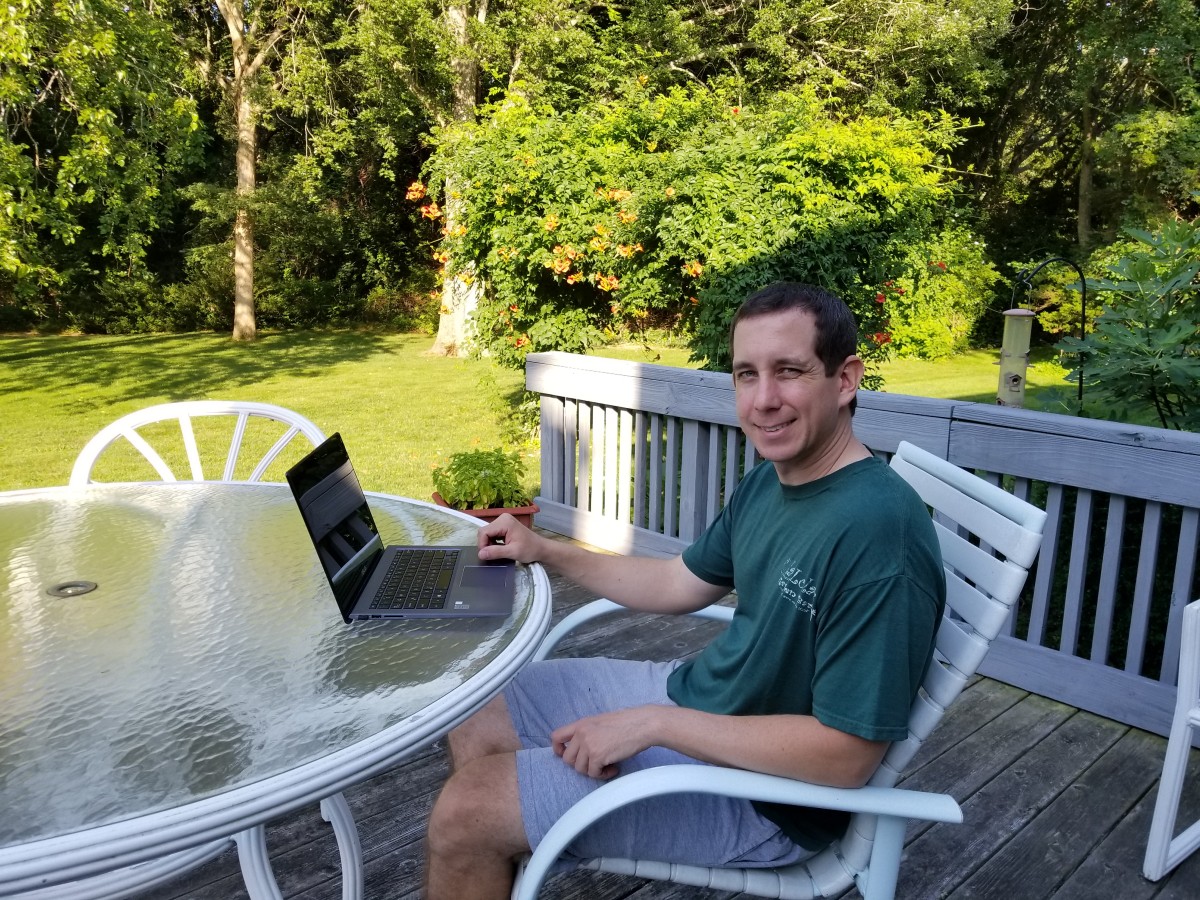
2. Tell us about your philosophy regarding content. How do you know what your prospective customers are looking for? Where does this information come from?
For several years I based content decisions almost exclusively on keyword research using SBI!’s Brainstorm It! tool.
In addition, I assessed other sites in the niche and print books about handling your own personal injury claims. After discussing the content plan with my brother and other writers, we came up with the main “Claim Guide” section of the site, which was about 100 pages.
After instituting a Question and Answer section using SBI!’s Content 2.0, we were able to see exactly what topics visitors wanted to know more about, so we expanded into the “Claim Types” section and “Letters” section. Now we also run surveys specifically asking visitors what topics they’re interested in.
Keyword Research. Brainstorm It!, the tool that Arthur uses for his intensive keyword research, is included in every SBI! (or SBI! for WP) subscription. It’s a comprehensive keyword research and analysis tool that enables you to reveal and target the keywords your audience is actively searching on.
And it’s just become even better! With Brainstorm It’s newest release, it’s turning into much more than just a research tool. It’s going to be your smart partner in business. Think AI (aka Artificial Intelligence).
For example, it will “nudge” you about high value opportunities that you’ve not seen, like keywords already receiving traffic, for which you haven’t built pages yet, and where you can expect a quick return on your time investment.
Much thought and care has gone into designing a superb piece of software that will become your personal reminder and idea-generator — forever. The more your site grows, the more data will accumulate and the more valuable Brainstorm It! will become.
Competitor Analysis. Learn from your competition. What are they doing well? How could you do it even better? Good places to start are books and magazines in your niche, competitor’s websites and their social media presence.
Visitor Consultation. This step comes later in the process, when you’re getting traffic to your site. Now you can ask your visitors directly what they want or need. Make good use of this highly valuable resource.
Adding a Q&A section to your site, like Arthur did, can yield huge amounts of valuable information. With SBI!’s Content 2.0 module it’s super easy to do. Not only can you tap into your visitors’ minds, they will also add fresh content to your site, for free. Check out what Content 2.0 is all about.
I don’t personally write content for the site. For the past 6 years I’ve had a retired judge write most of the content and answer all the submitted questions. This isn’t cheap, but he really knows his stuff.
Also, a judge helps convey the Expertise, Authority and Trustworthiness of the information (this type of EAT is a key factor for ranking well with Google, and the general public has very high regard for a judge).
I still do all the keyword research and establish the content plan, as well as all the editing and formatting. There’s always a lot of back and forth with the writer to make sure content covers the topic well and meets our requirements for depth and quality.
So, to outsource your content writing, especially all of it, is a risky step. In Arthur’s situation, though, it was the perfect decision. Having an experienced judge write his content and answer visitor questions in the personal injury claim business was a stroke of genius. Even more so as Arthur ensures that every piece of content meets his high quality standards.
We were curious how Arthur found such a special content creator. Here’s what he said:
I hired many different writers in the first few years, but no one was very good. In the beginning I found all writers through eLance (back when it was good, before they merged with Upwork). Later I tried Craigslist and other freelance sites, including posting on traditional job sites. I probably went through a dozen writers before finding Judge Calisi. We’ve been working together for about 5 years now. It’s been great.
3. You are not selling any products or services on www.InjuryClaimCoach.com. There are also no ads. How do you monetize?
We monetize through lead generation, which is technically considered “group advertising” for attorneys. We have a lead form at the bottom of all content pages and some other areas of the site, including a Click-to-Call button on mobile.
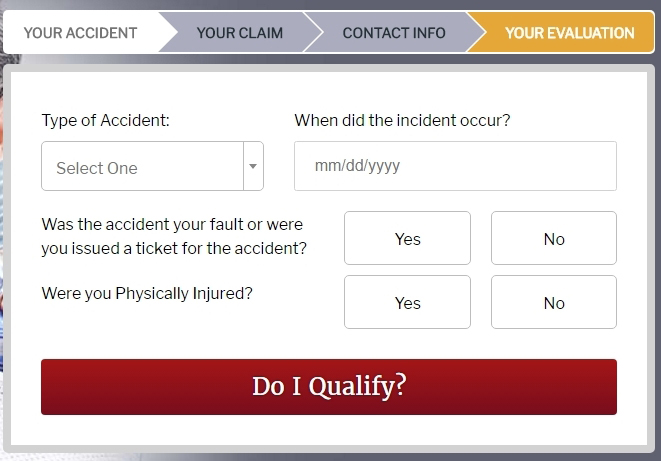
Visitors can complete the form if they meet certain criteria and would like a local attorney to review their case for free. This is standard in the United States for personal injury attorneys – most give an initial free consultation. But even though the consultation is free, attorneys will pay for the lead. It’s a win-win for all parties involved.
Currently we contract with lead brokers who have networks of attorneys across the United States. They handle all lead sales and client management, and take a percentage of the sale price. This drastically reduces the amount of management and overhead on our side.
We have very robust lead distribution software that sells the leads in an auction system (known as ping/post) and distributes leads automatically.
How does the referral fee model work? Folks search for information and/or solutions online. Meet them with the info they’re looking for and point them to the solution they need — one where you’ve pre-arranged a finder’s fee agreement with the solution provider.
In other words, become the invaluable and trusted intermediary between the searcher and the offline business. This works especially well in industries with high ticket items, like insurance, real estate, construction or anything that involves lawyers.
4. How long did it take to start earning income from your online business? Is it a full-time or a part-time income?
The business was part-time and earned a small amount for many years while I was learning and building (and working two other jobs). The content wasn’t very good in the beginning, and the site got hit by some of Google’s algorithm updates, including Penguin, due to shady link-building.
So income was up and down. It took about 5 years to start earning a full-time income, but for several years after that it fluctuated a lot. I didn’t have the lead distribution software from the beginning, which made it tougher to sell leads efficiently.
AdSense was a secondary revenue stream for a long time, but it slowly started to reduce payouts until it was no longer worth it to have ads. It also diverted attention from the site’s primary revenue model of lead generation.
For the past several years, the site has provided a very nice full-time income and relatively stable traffic. A few months ago we completed a major redesign and recode, during which no new content was added.
Now that the site work is complete, we’ve started adding a lot more in-depth quality content like this Texas Car Accident Guide. It takes a lot of work to produce a piece of content like that. But once it’s up, it brings in traffic (and income) for years.
Lesson 1: Don’t expect your online business to pay for your living expenses from day one, month one or even year one. Anyone who tells you otherwise is either delusional or a fraud. Unless you have another source of income, keep your day job and build your online business “on the side.”
Lesson 2: Add value and keep it real. How? Have your visitors front and center. Deliver what they’re looking for, in the highest possible quality. Never do anything just for the search engines.
Lesson 3: Test what works best for your business. AdSense does not pay out well anymore? Find a better monetization model. And don’t be afraid to remove AdSense completely, like Arthur or fellow SBI! member Jill Loeffler, whose income increased after ditching AdSense.

5. How many hours per day (or week) do you work on your online business? Are you the only person, or do you have help?
The amount of time I work varies greatly depending on if we have a content project near completion, or if I’m working on bringing on a new lead buyer, doing marketing, etc. It could be anywhere from 10 hours a week to 60. During the recent site redesign and recode I was extremely busy, working non-stop as there was so much to do.
There’s a wide variety of tasks I perform regularly: keyword research, content planning, editing and formatting content, lead sales, marketing, managing custom development, promotion, qualitative and quantitative research, conversion rate optimization, etc.
At any time I could scale down my current work to 5-10 hours a week and just put the site in maintenance mode, but I’m too passionate about building the business and I’m having too much fun right now. Yes, building an asset that provides value to others and residual income for me is work, but it’s also fun!
As the saying goes, “Find something you love to do and you’ll never have to work a day in your life.” (1) (A tidbit of trivia on the side: although often attributed to Confucius, it’s not fully clear who the original author of this saying is. Whoever it was, we agree!)
In addition to our head writer, I also just hired a part-time digital content manager to help with editing, formatting, and general organizational tasks, which take the majority of my time. This should free me up to work more on the monetization side and also have a little more free time for other endeavors.
I also contract out various tasks when necessary, such as graphic design, programming, writing, editing, etc. Currently, I’m working with a digital marketing agency to beef up our social media presence, which is very weak.
You need to outsource or hire help. SBI! teaches you what you need to know about outsourcing, virtual assistants and partnerships. Finding the right freelancer or employee takes time and effort. Arthur took this advice to heart, first with his head writer and now also with his digital content marketer. When asked how he found the right person, he explained:
“Jennifer is our new digital content manager. She started at the beginning of 2017. I found her through a job posting on Indeed, which was a rigorous process. I received almost 80 résumés, interviewed 12 candidates, and ran test projects (paid) with 3 of them.
Then of course I did reference checks and reviewed their previous work. I also took note of each candidate’s enthusiasm and responsiveness over the course of the process. It probably took about 3 months total, but was worth it. I’m very happy with Jennifer’s ability and attitude.”

6. Arthur, you said that you’ve “outgrown SBI!” and that this is a testament to “the awesomeness of SBI!.” Can you tell us more about this?
After 10 years of using the proprietary SBI! software (I was uploading my own HTML for many years) and growing the site to over 300,000 unique visitors per month, I made the decision to move the site to WordPress.
There was some custom functionality I needed built into the site, and wanted to allow for more consultants, designers, and independent contractors to be able to work on the site. The majority of these professionals already know and/or are experts with WordPress, so there’s no need for them to learn the SBI! software.
WordPress also has a very functional subordinate login function, so I can give workers access to the backend systems without worrying they could access or do damage to critical parts of the site. But make no mistake, the SBI! system is what I used to build my business and I’d recommend it to anyone starting out.
Of course I’m still subscribing to SBI! for WP for access to the Brainstorm It! tool and all the great instructional information — which is always being added to and refined.
An often overlooked benefit to SBI! is that they filter out all the marketing noise and only tell us about the important stuff. This saves a ton of time (and angst!) having to read through all the SEO and marketing blogs, which could take hours a day.
Also the SBI! forums are a great place for learning, especially the posts from Ken, who has incredible insight into the trends of online marketing and the future of web-based business.
When you need custom functionality and a larger team of helpers, like Arthur (or Judd Burdon, another successful SBIer who outgrew the platform), you’re taking your solopreneur business to the next level, closer to becoming an entrepreneur.
After all, it’s not the platform or the “sitebuilder” that makes you successful. Putting up a nice looking website is easy nowadays. But building the website is just one small part of building a real business. Some of the other parts include…
- Research and plan (perfect niche, best topics, site structure, competitive research, visitor “thumbnailing”).
- Plan your “Brand of One.” Decide upon issues such as positioning, VPP (“Valuable PREselling Proposition”), voice, and site design — they must all come together, as one.
- Create standout content that visitors want and need.
- Establish a sharp social media presence on the channel(s) that best fit your niche.
- Build high volumes of targeted, “PREsold” traffic.
- Monetize by converting visitors (who like and trust you) into income.
- Upgrade your monetization choices to higher-paying ones as time frees up from earlier activities.
In short, “site” is not the same as “business.” You need a complete system of process, tools, guidance and support if you want to become successful online.
As Arthur says, “Make no mistake, the SBI! system is what I used to build my business, and I’d recommend it to anyone starting out.”
7. What has been your biggest challenge so far as a solopreneur?
My biggest challenge has been persisting through the ups and downs, and getting through the learning curve at the beginning. This would have been quicker had I simply gotten over my own ego and followed the Action Guide.
I tried at least a half dozen different online home based business ideas and a couple “get rich quick” scams before finding SBI!, and even then I didn’t follow the Action Guide. I thought I knew better. Turns out I didn’t.
So it wasn’t until my second SBI! site when I followed the Action Guide more closely that I saw success. And even then, I went through several iterations of the site and had to rewrite and refine a lot of the content over time.
It takes a while to learn the skills involved in building an online business. SBI! shortens the learning curve drastically for those who follow the system, but there’s still a lot to learn. As long as you persist and take one step at a time (like the Tortoise — SBI!’s mascot), you’ll meet with success.
No matter how long it takes, it’s worth it.
Few people succeed on their first attempt. There are guaranteed patterns of failure, things that you may do over and over again.
One way or another, it all comes down to this…
1) If you fail once, it happens.
2) If you fail twice, look for a pattern.
3) If you fail three times, a pattern is there. If you don’t find it, stop trying to succeed. You’re not being honest with yourself and you’ll likely just keep repeating the pattern.
4) If you do find how you’re stopping yourself from succeeding, rectify and then keep trying. Every success has the story of persistence behind it.
Arthur recognized his pattern of failure. He thought he “knew better.” He thought there was a fast lane to online success. Once he realized that the best way to succeed was to follow a proven, time-tested process, he achieved success beyond his wildest dreams.
Are you worried about failing? Then “How Not to Fail in Business” is a must read for you!
8. What do you enjoy most about being an online business owner? How has it changed you, your life, your family?
In a word: Freedom.
I can work anytime, from anywhere in the world. After starting to earn a full-time income and saving some money, I was able to fulfill my dream of traveling abroad. I put all my belongings in storage and traveled the world continuously for over 3 years. I visited 27 countries, learned to speak Spanish, and grew tremendously as an individual.

I’m now back home in the States and was able to purchase a home in Florida with income exclusively earned through my SBI! site.
I still enjoy the freedom to visit family and travel 3+ months per year. This is all possible due to location-independent income from my SBI! website. I still work on my business, often very hard, but this is because I want to and enjoy it, not because I have to.
I almost never wake up to an alarm, and I know I can take off for the day if I want to or something more important comes up. This is priceless. If you paid me 10x as much as I’m earning now, but said I’d have to work in a corporate job and be part of the rat race, I’d turn it down.
The freedom to take a day, a week or even 3 years off when you want. And of course, the financial freedom that comes with running a profitable online business.
9. And finally… What’s your top tip for someone who is just starting a solopreneur career?
Dedicate yourself and persist until you find success. If your inner dialogue is, “I’ll give this a try,” or “Let’s see if I can make money online,” then don’t even start. This isn’t a temporary gig, or something you do just to “make money.”
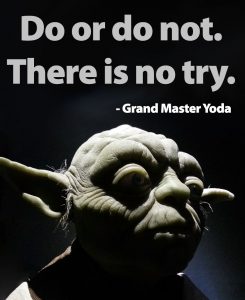 TAKEAWAY #11: Bingo! We couldn’t have said it any better. From the moment you embark on your solopreneur career, immerse yourself in a business mindset. You are not “putting up a website that makes money.” You are building a long-term business with ever-growing profits and equity.
TAKEAWAY #11: Bingo! We couldn’t have said it any better. From the moment you embark on your solopreneur career, immerse yourself in a business mindset. You are not “putting up a website that makes money.” You are building a long-term business with ever-growing profits and equity.
It may sound small to you, but having a business mindset impacts in important ways, from how you prioritize your limited time to planning a monetization mix that maximizes your income.
You must create something high quality that provides value to others. This takes a lot of work over a long period of time. It also requires learning new skills. It’s definitely doable and repeatable, but not easy. You have to be committed to building a business for the long haul and making a better future for yourself. In short, you need BAM (Brain, Attitude, & Motivation).
Despite what I just said, I think everyone should start a website. Sadly, few will, and even fewer will follow through.
I’ve recommended SBI! to at least two dozen friends and family members, and even offered to give them free coaching. Out of all those people, 4 actually purchased SBI!, and out of those 4, only 1 got to the point of purchasing a domain name and putting content online.
These are people who’ve seen the success and freedom I’ve had with my site first-hand, and have access to me for coaching, but still don’t take action. I think most people don’t have the belief in themselves or aren’t willing to step out of their comfort zone.
But if you do, get SBI!. It gives you by far the best chance of creating a lasting, profitable online business.
Really commit to it. Follow the Action Guide step-by-step. Whether you have 5 hours per week to work on your online business or 50, it doesn’t matter. You’ll set your own pace. As long as you make progress, you’ll achieve the success you wish for and deserve.

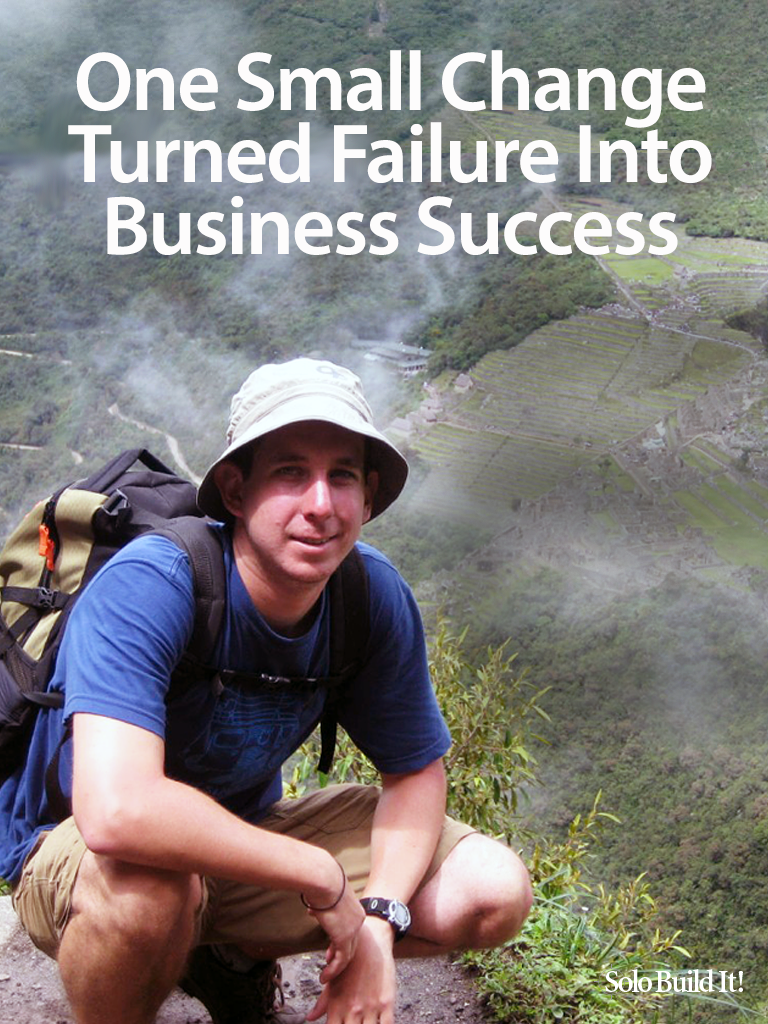
Latest posts by Margit Streifeneder (see all)
- From Traffic Peaks to Auto-Pilot: A Psychologist’s Website Success Story - March 27, 2025
- From Swim Teacher to Solopreneur: Building Passive Income Online - February 27, 2025
- From Concierge to Global Tours: 10 Lessons for Travel Business Growth - December 19, 2024

